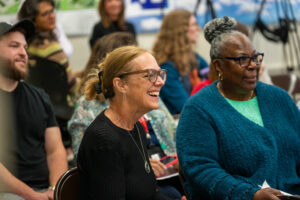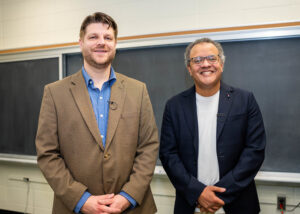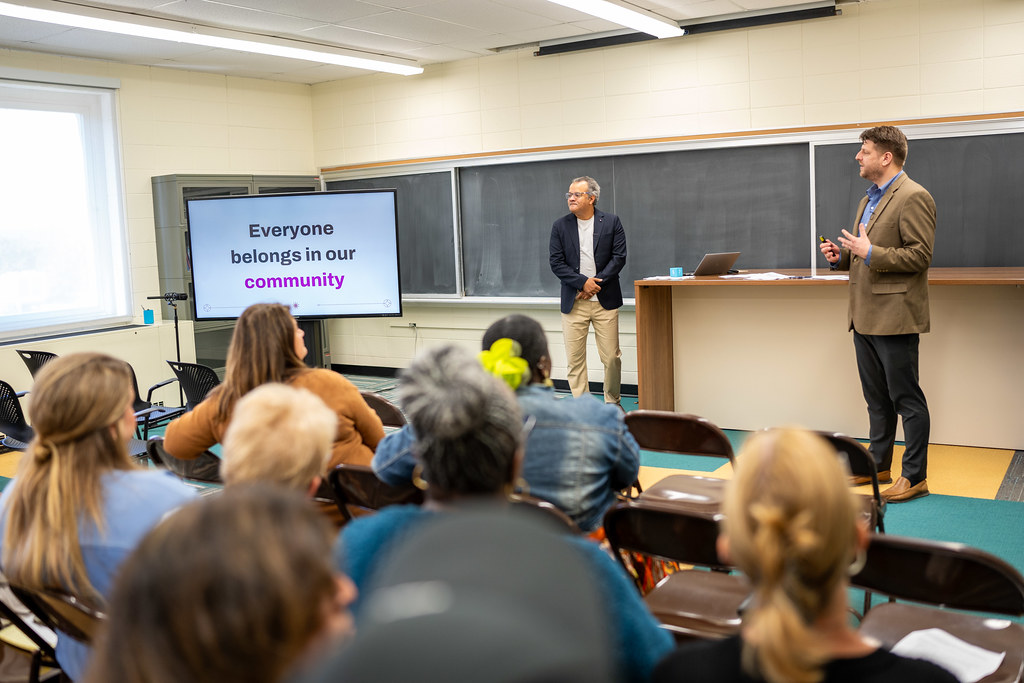Gabriel Gonzalez
Student Life Editor
The first provost colloquium of the semester was held last Wednesday in Stroud 404 and focused on neurodiversity within the classroom.
Andy Gavilis, assistant professor of reading, and Ahmed Yousef, associate professor of art, media and design, presented to a room filled with faculty and staff, highlighting techniques, attitudes and strategies to get the best out of students with neurodiversity.
Gavalis and Yousef decided to conduct the colloquium because of their own experiences with neurodiversity, as they both have children on the autism spectrum. Raising them taught the two professors more effective approaches, though they may not be in line with more traditional strategies.
With autism and other neurodiverse conditions on the rise, it’s become increasingly important for those working in or planning to work in education to understand how to handle it. The first half of the colloquium was centered on defining these conditions. Luckily for Gavalis and Yousef, an indigenous culture rebuilding their cultural language had brought the concept forward.
“In All Our Space and Time,” the title of the colloquium, refers to the meaning of the Māori word for autism, “takiwatanga”, which both Gavalis and Yousef thought was very apt.

To put it simply, students with conditions like autism don’t intake information and spread it as easily as others. Gavalis read “Before She Was Harriet” by Lesa Cline-Ransome to his son, then asked what he thought about it. His son didn’t answer him then or the day after or even the week after, but eventually his son had one: “There’s always tomorrow.”

What Gavalis was hoping to explain through that personal story was the space and time in which his son came to his conclusion. It wasn’t immediately after finishing the book right in his bed, it was two weeks later while waiting at his school bus stop. His son had his own space and time, and Gavalis honored it.
Yousef went into further depth on what honoring students with neurodiversity entails, breaking it down into simple guidelines:
- Start from strength: See your students as capable.
- Listen effectively: Go beyond a single encounter.
- Give them space and time to communicate: This can be a very specific time or place, as some with neurodivergent conditions find it hard to function at unfamiliar times in unfamiliar environments.
- Learn their language: Pay attention to nonverbal cues that express emotions they find it hard to put to words.
- Honor their perspective: Allow them to express an opinion that doesn’t seem on topic, because sometimes what seems off-topic is just a different perspective at work.
- Use explicit frameworks: Ask in terms of what, why and how.
- Use simple language: Break down tasks into steps so the student isn’t overwhelmed.
- And color-code: This framework helps students easily identify assignment properties.
Many faculty and staff commented on how much they would’ve appreciated the info when they were initially being trained, but Gavalis and Yousef didn’t blame them.
The neurodivergent community wasn’t always so prominent. Accommodating that community within the classroom is another step in inclusion, Yousef explained.
“Your class is a community,” said Yousef. “And ESU is a community for everyone. We must honor each person’s space and time.”

Image courtesy of flickr.com
Officially, autism is considered to be a scattering of traits. It’s different ways of learning, paying attention and moving. They have difficulty with social communication and restricted or repetitive behaviors or interests. But that’s just one perspective. Gavalis had a different one:
“When you look at a constellation, it may appear as this scattering of traits, but when you zoom in it’s one individual star.”

